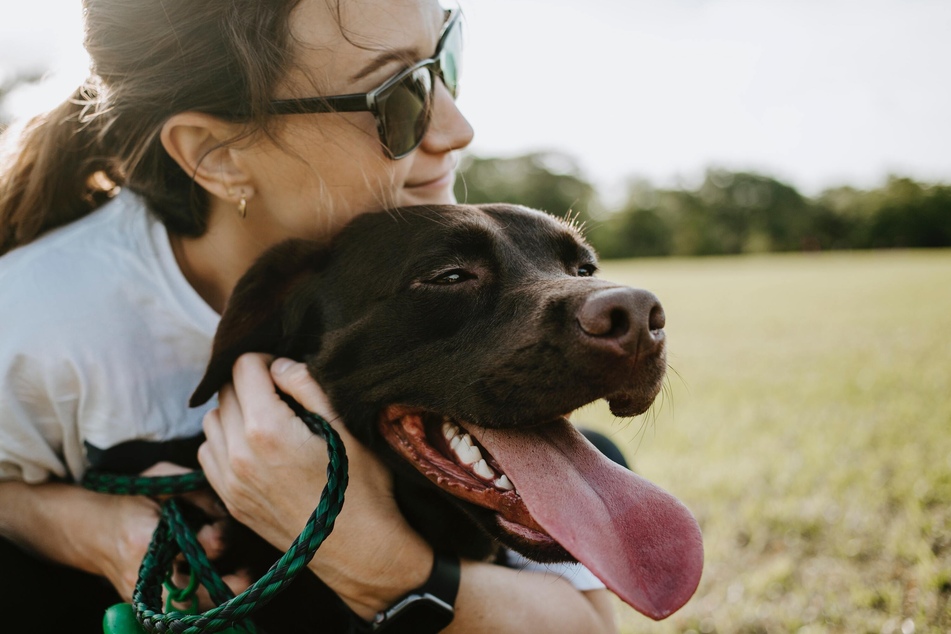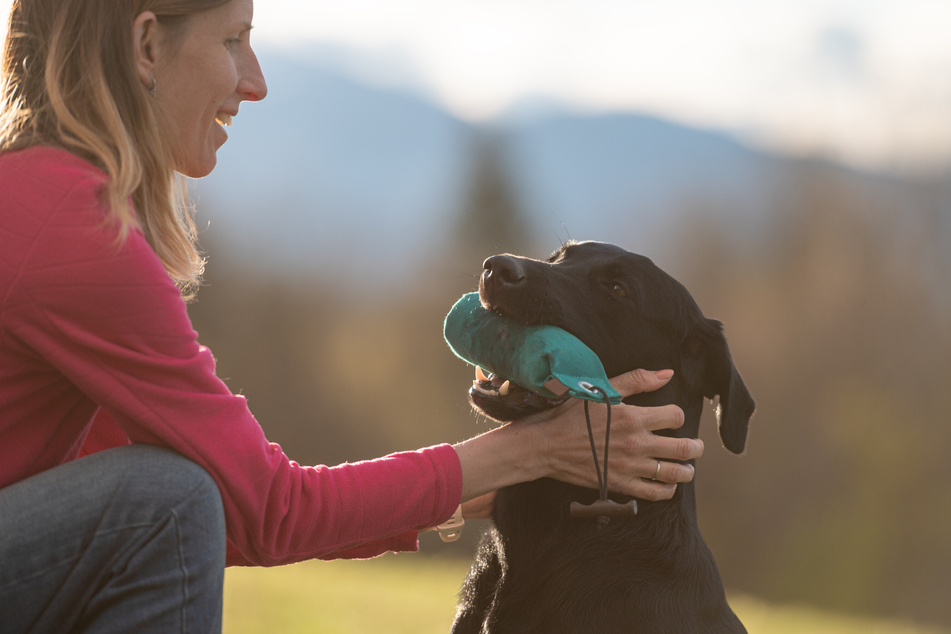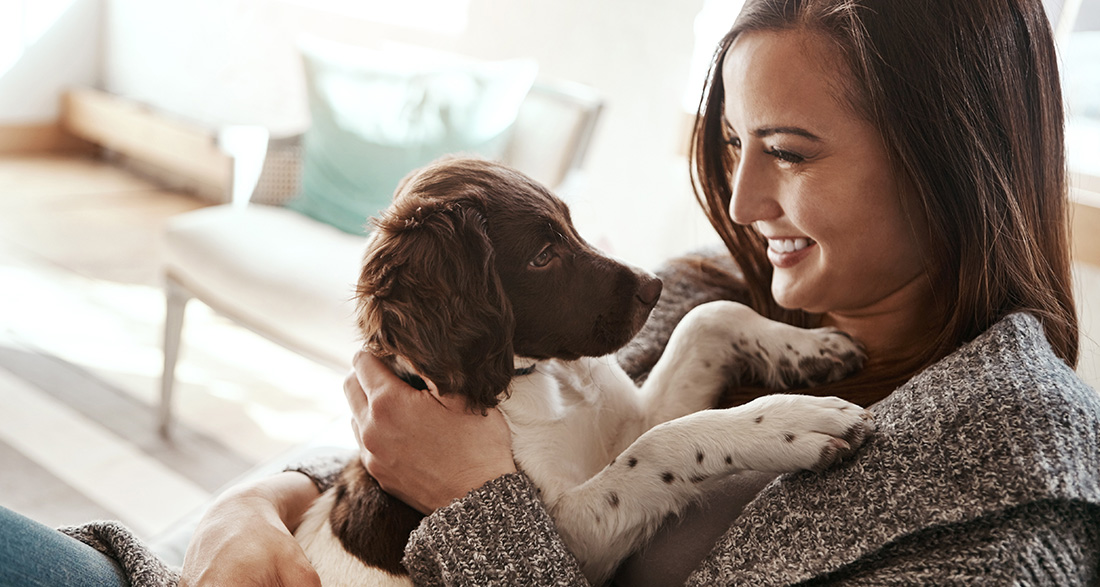Rewarding a dog without treats can pose a significant challenge for some dog owners. The right reward is situation-dependent and should align with the dog’s needs. Learn about alternatives to the classic treat and how to use them correctly below!
How to Reward a Dog
While the treat is arguably the most popular reward among dog owners, it’s not always the most suitable. Apart from treats, there are many alternatives that make training more interactive and contribute to long-term success.
Puppies, in particular, learn best through play. Therefore, the traditional treat is often not the best reward for young dogs.
Imagine this: Your dog is chasing something and jumping around. Consider what his need is in that moment. Frolicking and running, precisely! A small bite of food is, therefore, less satisfying for the dog at that moment. How about engaging in a shared game instead?
This situation vividly illustrates what it means to reward based on the dog’s needs. This thought process can be applied to other situations as well. It’s crucial for dog owners always to ask themselves: What need does my dog have, and why is he behaving this way?
Certainly, one can reward a dog without using treats. You just need to think of a suitable alternative for each situation.
Quick Facts:
- A reward should be chosen based on the situation and the dog’s needs.
- Alternative rewards to treats include activities like playing or running, verbal praise, affection, and time.
- Rewards should be individually tailored.
- Dogs should be rewarded within a few seconds of exhibiting desired behavior.
- There is a distinction between intrinsic and extrinsic motivation.
- Intrinsic motivation is the goal and requires a strong bond between the dog and the owner.
How do I reward my dog correctly?
Dogs obey because they anticipate benefits from following specific commands. Ideally, this benefit should be as close as possible to the dog’s needs.
Therefore, correct rewarding is situation-dependent and should always be adapted by the dog owner.
In an environment with many stimuli, food alone often isn’t enough to motivate the dog to exhibit a particular behavior. Hence, it makes sense to vary the rewards—for example, by incorporating social interaction. Such interaction has the advantage of strengthening the relationship between the human and the dog. Furthermore, a good relationship forms the basis for reliably following commands.
Important
Even if a dog consistently follows practiced commands, one should never completely eliminate rewards.
What can be used as a reward for a dog?
In addition to the typical treat, the following alternatives can be considered:
- Food
- Small treats
- Shared play
- Joint running
- Verbal praise
- Affection and petting
- Playing with dog toys
- Throwing a ball or treat bag
- Time for sniffing and other dog hobbies
Material or social rewards for a dog
These alternatives can be categorized into two different types. Some are tied to specific objects, while others are associated with a social interaction.
A material reward is not inferior to a social one, but dog owners should ensure their dogs experience not only material rewards.
Otherwise, a dog might only exhibit a certain behavior when a material reward is promised. Additionally, as mentioned earlier, social rewards are highly valuable for strengthening the bond between dog and human.
How to properly apply alternatives to treats is explained below.

Dog Food as a Reward
Food as a reward is a healthy alternative to treats. It can be sensibly used in many situations and is particularly versatile. For example, a handful of food can be scattered in the grass as a reward.
Dog Treat Dispenser
The treat dispenser makes the reward interactive and strengthens the bond with the furry friend. This way, the dog not only learns to obey playfully but is also motivated by eating.
Shared Play as a Reward
Play is a great reward when a dog is in the midst of frolicking. If you call him to you, and he follows the command, engaging in shared play is the perfect reward.
Joint Running of Owner and Dog
The dog is constantly circling and has a strong urge to move? How about running a lap together? This can wonderfully serve as a reward for a successful recall or an interruption of movement.
Verbal Praise as a Reward
Without Treats Sincere verbal praise is a great reward, and most dogs respond well to it. However, dog owners should ensure it goes beyond a brief “good,” “fine,” or “excellent.”
Rewarding with Affection and Petting
Affection and petting at the right time reinforce a dog’s behavior. This type of reward can be particularly well-applied within routines and can be combined with verbal praise.
Playing with Dog Toys as a Reward
Similar to joint play, playing with a toy can also be used as a reward. Tug toys or dummies are particularly suitable for this purpose.
Time as a Reward
Time is a relatively broad term. It means giving the dog space for his needs. For example, free roaming can be used as a reward, allowing the dog time for digging, sniffing, or running.

Choosing the Right Alternative to Treats
The reward should be tailored to the dog. Dog owners typically quickly notice which rewards resonate best with their four-legged friends. These can then be applied situationally and appropriately.
For instance, some dogs may not enjoy being touched, while others may not have a favorite toy or may not be interested in balls. In such cases, it’s essential to experiment and closely observe the dog!
Timing: When Should I Reward My Dog?
A reward for desired behavior or a successful command should ideally follow within a few seconds of execution. This way, the dog can understand the connection and associate the reward with the correct behavior.
How Do I Motivate My Dog Without Treats?
Many dog owners wonder how to best motivate their furry companions. To understand how to motivate a dog for training, one must first comprehend how motivation works.
There are two different types of motivation:
Intrinsic Motivation
- The dog exhibits behavior spontaneously or from an inner motivation.
Extrinsic Motivation
- An environmental stimulus motivates the dog to display a certain behavior.
Extrinsic motivation can also be fear of punishment. However, motivation through fear should be an absolute taboo, as it harms the dog and has a negative impact on the relationship.
Moreover, training with the dog should be something enjoyable for both the owner and the furry friend. So why use punishments when you can reward?

5 Tips to Increase Dog Motivation
- Adjust Training Time: Train when the dog is most active.
- Regulate Training Duration: Some dogs are more motivated and focused when daily training is divided into short, multiple sessions. Especially puppies and young dogs may struggle to concentrate for extended periods.
- Use Treats Only in Training: To maintain the excitement over a particularly tasty treat, don’t use treats too frequently.
- Choose a Low-Stimulus Environment: To avoid stress and distractions for the dog, keep things calm. This is particularly important when teaching new commands.
- Individual Rewards: Not every dog likes every reward. It’s crucial to find out what the dog responds to best.
Conclusion: Rewarding a Dog Without Treats Is Possible!
Rewards should be adapted to the situation and the dog. Social reinforcers are particularly effective, but it’s essential to vary between different types of rewards. Not only does the reward matter, but timing also plays a crucial role and should always be considered.
Every dog is unique and learns at a different pace. While the mentioned five tips can boost a dog’s motivation for joint training, some dogs may take longer to establish the right motivation than others.
In any case, it doesn’t always have to be a treat. One can reward a dog without using treats, and the beloved furry friend won’t miss a thing.


